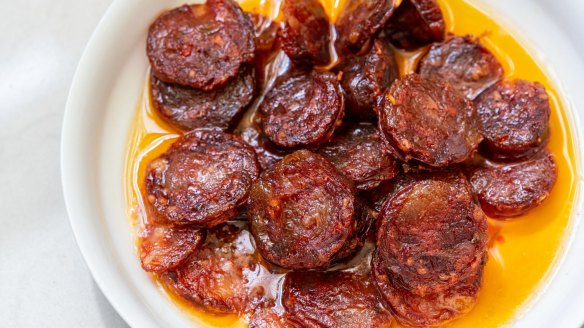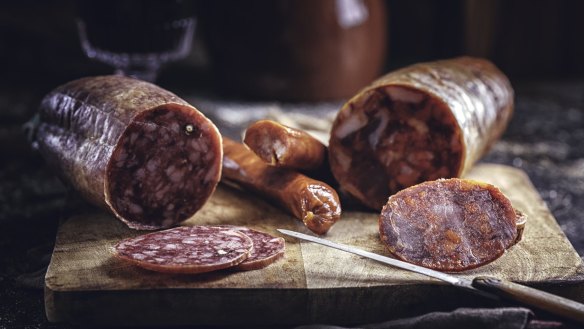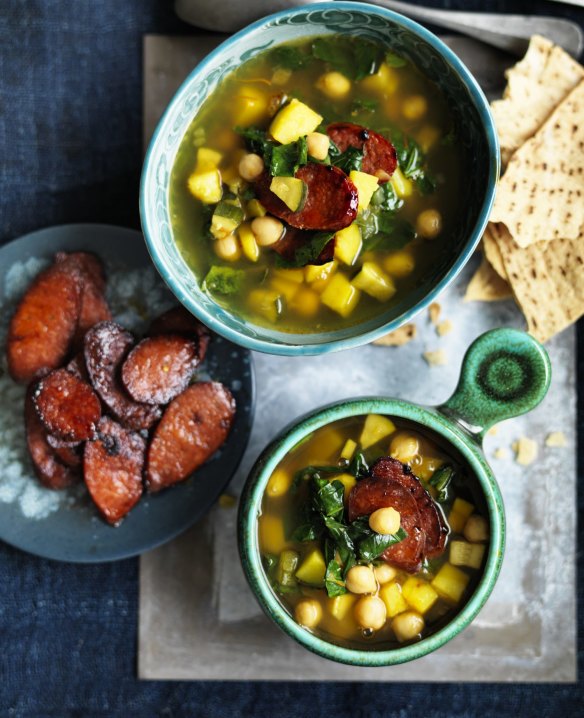Chorizo: Everything you need to know

What is it?
Originally from Spain, chorizo is a spiced pork sausage made with minced or chopped pork and about 30 per cent fat, plus salt, herbs, garlic, sometimes wine and always Spanish paprika. There is no one Spanish chorizo recipe. The recipe changes from region to region.

The word chorizo describes several types of sausage. One is raw or fresh chorizo, which is used in stews and occasionally grilled. Another is the fermented and air-dried chorizo, which becomes harder and darker as it cures, developing a clean lactic acid tang like salami. And finally, in former Spanish colonies such as Mexico, chorizo has evolved into a hot, spicy snorker, unlike its milder Spanish antecedent.
Why do we love it?
Chorizo captures the flavours of Spain. In a single mouthful, there is the sweet, rich flavour of pork and the heady aroma and slightly bittersweet notes of Spanish paprika. Many makers use a mix of different paprika, but the best include smoked paprika from Extremadura carrying La Vera hallmark. It is a visually appealing sausage, with lean pork muscle against a deep red paprika-filled background and flecks of white pork fat creating a meaty mosaic.

Who uses it?
"Before we start, can I say, never ever use chorizo in a paella?" says MoVida's Frank Camorra. "It overpowers all the other flavours and is all you taste."
The Barcelona-born chef thinks of raw chorizo as a meaty bouquet garni because it adds so much flavour to any dish it is cooked in. "You can cook it with lentils and vegetables along with morcilla (Spanish black pudding) to impart richness and flavour. Or simmer it with lamb ribs and potatoes, and when the ribs are soft, cut up the chorizo and add it back to the stew." More simply, Camorra suggests grilling raw chorizo and serving it with fried eggs as a Spanish supper.
Chef Ruben Lopez Mesa, from private caterers A Table of 10 in Orange, was born in Pinto, just south of Madrid. "When we were growing up, families would raise and fatten a pig. During la matanza, the annual slaughter, much of the pork was made into sausages," he remembers. "They would mix the pork with herbs they grew themselves, some garlic, salt and, of course, smoked paprika. Some chorizo were eaten fresh, the others hung in the cellar to dry to last through the cold winter."
Lopez Mesa says when it comes to dried chorizo, less is more. "The higher the quality, the finer you slice it so you can taste all the pork and spices. It only needs bread and red wine."
How do you use it?
- Try making Frank Camorra's lentil soup with raw chorizo or Neil Perry's Spanish-inspired soup (pictured).
- Grill raw chorizo and serve it in a crusty roll with roast capsicum and mayonnaise.
- Remove several raw chorizos from their skin, fry the filling until brown and sprinkle over grilled vegetables.
- Make a tapas plate of dried chorizo, sliced 2-3mm thick, and serve it with Spanish olives, manchego cheese and anchovies on bread.
- Grill dried chorizo and serve with calamari and chickpeas or add to summer vegetables, such as tomatoes and beans.
- Save the paprika-stained oil released from grilling or frying chorizo and add to mayonnaise for chorizo mayo or drizzle it over barbecued mussels.
Where do you get it?
Many sausages labelled chorizo sold in butchers are pale imitations of the real thing. It needs to be made with real Spanish smoked paprika to be good chorizo.
Look in delis, good food stores and high-end butchers for chorizos made by manufacturers such as La Boqueria, The Iberians, San Jose Smallgoods and Rodriguez Bros. . Melburnians can have chorizo home-delivered by the Natural Chorizo Company, 0409 514 568.
Send your culinary conundrums and ingredient suggestions to brainfood@richardcornish.com.au or Twitter and Insta @foodcornish
Appears in these collections
- More:
- Food
- Brain food
